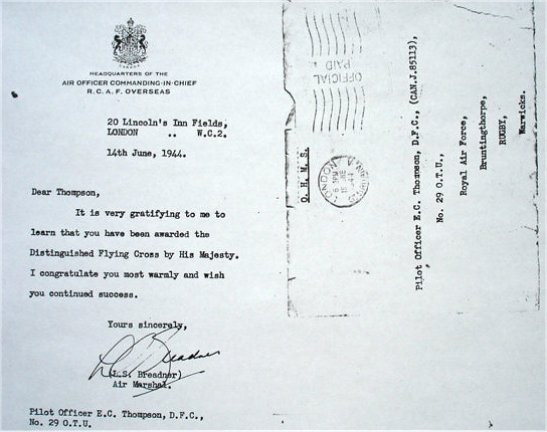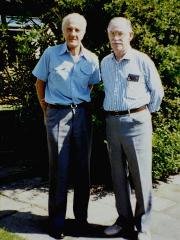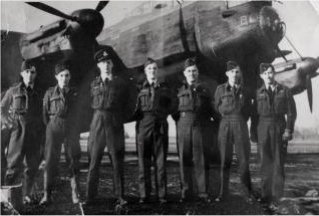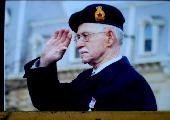Don Macfie
I was too frugal to gamble away my RCAF pay, but I watched
lots of others doing so. Returning to Canada on the Aquitania after finishing
my first tour of ops, a fellow crew member, George “Joe” Irving of Meaford,
Ontario, accumulated a huge pile of matches by the time we docked. He’d
lost all his money earlier, and only started winning after joining a poker
game made up of others in the same boat.
The real gamblers aboard were some US Army Air Corps chaps.
When they weren’t shooting a line about Flying Fortresses, they were shooting
craps. I was watching some of them up on deck throwing dice against a bulkhead
when a gust of wind blew the pile of bills off the middle of the blanket
and overboard into the Atlantic. The $3300 pot was quickly replaced, and
the game went on as if nothing had happened.
When I told this story to my brother Jack
the other day, over a beer in our Legion branch (it occupies the one-room
schoolhouse where we both got our education), it reminded him of the time
he anxiously watched his own hard-earned pay go overboard, or at least
out the barracks door. This was at #7 Bombing & Gunnery School at Paulson,
Manitoba, where the snooker table in the mess hosted a crap game on pay
nights.
The chief instigator was a good-natured Boston Bruins
hockey player named Don Gallinger, an air gunner by trade but mainly kept
by the RCAF to play hockey. In the off-season, Gallinger was Paulson’s
sports officer, and his favourite sport, even above hockey, was gambling.
Gallinger’s chief adversary around the crap table was a tour expired air
gunner named Plotnick. One or the other usually finished the night a big
winner. When Plotnick got posted south to Portage la Prairie, next pay
night found him back up at Paulson gunning for Gallinger.
My brother, who only dabbled in the game while stakes
remained small, was back in barracks sound asleep when he was shaken awake
by Gallinger, who had gone broke and needed $100 to get back in the game.
Small change to a big league hockey player, maybe, but a small fortune
to a boy off the farm. But Jack had been a keen hockey fan since 1939,
when we got a battery radio that pulled in Foster Hewitt’s hockey broadcasts,
so he couldn’t refuse the big, blonde hockey god in his time of need. Ten
ten-dollar bills, still warm from Pay/Accounts, were dealt into Gallinger’s
proffered palm, and he charged out of the hut as if streaking for the Maple
Leaf net.
Jack and Gallinger occupied adjacent bunks. All
Sunday morning, Jack kept anxious watch over his sleeping neighbour. Was
that a hint of a satisfied smile creasing the boyish, pink-cheeked face?
Or was the recklessly risked $100 gone with the wind, like that $3300 pot
out on the Atlantic? Near noon, Gallinger stirred under the grey
air force blanket, grinned at Jack, and withdrew a roll of bills from under
his pillow. The ten tens he peeled off the wad and handed over did not
noticeably diminish its girth.
Jack says it was not until years later that he began to
wonder why he didn’t ask (and Gallinger didn’t offer) an additional ten
by way of interest. At the time, it seemed reward enough just to have done
a brotherly favour for one of his heroes, a flesh-and-blood NHL hockey
star.


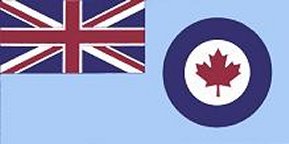



Halifax 57 Rescue (Canada)
Registered Charity 84586 5740 RR0001
www.57rescuecanada.com
email: 57rescuecanada@rogers.com
PROGRESS REPORT Number 21 ~ NOVEMBER
6, 2007
Greetings to all our members and supporters. We approach
a most special day, Remembrance Day on November 11th, when we honour our
men and women who have sacrificed for all us so that we might be free.
Our special Halifax Project, to locate and recover the
most historic combat aircraft RCAF Halifax LW170, is our ultimate tribute
to the efforts and sacrifice of these wonderful people who gave their all
for Canada and the world, for Freedom and Peace.
As proceed on this most honourable quest to find LW170
we hope to educate all generations of Canadians and our Allies to the excellence
and great effort or our Canadian forces in the fight for Freedom.
As Halifax 57 Rescue (Canada) is partners with the finest
Bomber Command Memorial and museum in all Canada, the Nanton Lancaster
Society Air Museum, it is especially a hard time for all in Nanton
as one of our own sons, Corporal Nathan Hornberg of the King’s Own Calgary
Regiment, was killed-in-action in Afghanistan. He died fighting for what
he and all Canadians believe in, so we honour his sacrifice with our thoughts
and prayers going out to all his family at their great loss.
It will truly be a day of Remembrance in Nanton this November
11th.
WE WILL REMEMBER THEM
ON TO BUSINESS – THESE ARE THE HALI-FACTS
First let me say, as Project Manager, that I apologize
to all our members, supporters, and fans for a bit of a delay in getting
out Progress Report 21. Between my own job, family matters, planning for
the Halifax Project, and a myriad of other pressing items there has been
hardly any lulls to sit down and get this report out to you. We are making
good progress and I will give you a run down at this time.
Last report I invited all our readers to come out to the
annual Memorial day function at the Nanton Lancaster Society Air Museum
on August 25. The world is really noticing Nanton with their great
Bomber Command Memorial Wall and all the hands-on activities to educate
all of us of the great efforts of Bomber Command and our own RCAF in Allied
Victory.
Nanton now has the world’s largest RCAF flag ( 40 feet
by 20 feet -- 13 meters by 7 meters ) which was first raised and flown
on August 24 and flew all weekend as a tribute to our aircrews and RCAF.
This super flag will be flown in the future at all air force functions
so you must come and see this special flag. It flies on a 100 foot flagpole
of our friends, Ultimate Trains of Nanton, and you can see this wonderful
flag flying from 5 kilometres away as you approach Nanton..
The special group within the RCAF that was paid tribute
this year was the RCAF Americans who joined the RCAF in WW2, over 8000
strong. There were over 370 names of Americans on Nanton’s Wall who were
killed-in-action in Bomber Command and it was a very special ceremony with
many U.S. Officials and family members attending this dedication of
the sacrifice of Americans in the RCAF. We must never forget our best friends
and neighbours !
The Lancaster Merlin engine runs were great along with
all the other functions and activities, especially the addition of the
wartime re-enactors attending in full RCAF uniforms and combat gear which
added great interest and colour to this year’s event.
The Re-enactors are planning even more participation
next year and hope to come down for 3 days of fun at the museum and to
help “Liberate” Nanton in August of 2008.
Well done to all concerned! (to see photos of the event
and raising of the special RCAF flag just go to the Nanton Lancaster Society
Air Museum website for all the latest).
Halifax 57 Rescue (Canada) directors Jim Blondeau and
myself, along with director Chris Charland making his first trip to see
the Nanton celebration, were able to attend and participate in all the
functions. Halifax 57 Rescue (Canada) was pleased to have assisted Nanton
in all the preparations and support of this great event.
An interesting development which have come out of the
ceremonies in August at Nanton, with Jim Blondeau singing his tribute songs
of “The Wall at Nanton” and “American Eagle and the Proud Maple Leaf”,
is that Jim and yours truly have been invited to give a Remembrance Day
presentation to 300+ young people at the Ecole Senator Riley School in
High River, Alberta on Nov.9. We are most pleased to be able to contribute
to the program for the young people and teachers of this school who truly
care about our veterans and their sacrifice for our Freedom. I will report
on this later in our next report.
Our most important Halifax sonar survey, to locate and
inspect LW170, is very much a reality and soon we will be on our way to
find our historic Halifax. I have been constantly corresponding by
email and phone with the deep sea experts in Galway, Ireland and their
officials about the plans for the sonar survey. After much adjusting and
evaluation of the scientific ship cruises scheduled for late 2007 and early
2008 our joint opinion is that we will be able to “piggyback” the Halifax
sonar survey work on to one of these scientific cruises in the early part
of 2008.
To this end I will once again be going to Galway, Ireland
to meet with the sonar experts to do more detailed planning for the Halifax
sonar work. Remember that our Irish sonar experts already have done great
“homework” on the Halifax sonar survey box and have found 2 definite targets
already by applying their diligent searching talents to historic sonar
data which was gathered over 4 years ago during other sonar surveys. Certainly
these 2 targets will be a first priority to scan when we go out on the
sonar expedition.
This upcoming meeting will be happening on Nov. 15/16
in Galway and I will be sure to give all of you another update before Christmas
season starts.
I should mention that just before this important meeting
happens in Galway I will be in Hull, England on Nov. 14 to give a presentation
to a branch of the Royal Aeronautical Society. This will be a program showing
the past recoveries of Halifax NA337 in Norway and LW682 in Belgium with
the emphasis on our new Halifax Project to locate and recover RCAF Halifax
LW170.
All of this program was set up and organized by our good
friend and ally in Leeds, UK Ken Cothliff who runs Air Supply Aviation
Store while he does his best for the boys of Bomber Command, one of whom
was his father who flew in the RCAF and was killed-in-action on Halifaxes.
Hopefully we will raise even more support in the UK for our Halifax Project
as we are not as prominent in the UK as we should be, considering that
LW170 served in an RAF 518 MET. squadron as well as the RCAF in 424 squadron.
I would like to thank all of our most generous members
and supporters for their financial support in the recent past, especially
those of you who have provided major funds for the Halifax 57 Rescue (Canada)
share of the sonar survey costs. We must be ready to hold up our end of
the partnership with our Irish deep sea experts and at this time we have
the minimum, just enough funds to cover our sonar fund obligations.
I am not comfortable with our finances as they stand as
so I must be forthright about my concerns in order to protect our project.
As Project Manager I have kept the funds donated for our share of the sonar
survey costs separate from general revenues. I will keep our accounts this
way to ensure we have sufficient funds to cover our share of the sonar
costs, coming due in the near future.
Our general revenues are generated by the new memberships
and donations, sales of Halifax signed/unsigned prints and Halifax CD-Roms,
and one-time donations by groups and individuals. I feel it is important
to tell you now that our sales of prints and memberships with renewals
has slowed down considerably over these past 3 months.
To protect our financial position to do the sonar survey
(because funding via print sales has slowed down so much) I have had to
start paying some of the bills for Halifax 57 Rescue (Canada) out of my
own finances. In fact, I am covering all the travel costs and expenses
out of my own funds for the trip to Galway, Ireland next week. I am willing
to accept this in the short term and hope you will understand my mentioning
our financial situation now.
In light of this momentary shortfall of our finances (with
the pending sonar survey looming in the near future) I would ask all of
you who would like to see the Halifax Project succeed to please send in
your financial reinforcements between now and the end of the year.
This could be in the form of a special purchase for Christmas
of one of our high quality signed or unsigned prints or a Halifax history
CD-ROM or even a renewal of your membership or purchase of a membership
for someone you know who has RCAF or air force heritage in their family.
What about a special Christmas gift for a friend or buying a print for
your local Legion or Air Force Association Wing?
There are many good reasons during the upcoming season
to help us financially get over the hump during this bit of a financial
dry spell. I can assure you that Halifax 57 Rescue (Canada) will persevere
and succeed but we will need your continued support. Simply by sending
in your donations and support for 2008 now (before the end of this year
2007) you will be strengthening us for the all important 2008 when RCAF
Halifax LW170 will be found. For those of you who know myself and my directors,
and our track record, you know we will “press on regardless…”.
I will close for now with my favourite poem, which is
a beautiful message and beckoning call from all those “forever young” people
we will remember.
Karl Kjarsgaard
Project Manager
Halifax 57 Rescue (Canada)
Email: 57rescuecanada@rogers.com
Eastern Canada
Halifax 57 Rescue (Canada)
Unit 31C – 174 Colonnade Road
Ottawa, ON
K2E 7J5
Phone 613 863 1942
613 226 4884 |
Western Canada
Halifax 57 Rescue (Canada)
P.O. Box 606
Nanton, AB
T0L 1R0
Phone 403 603 8592
. |
SEARCH PATTERN
We received the following request:
“We are trying to locate relatives/descendants of F/L
Roy Lloyd Clearwater #J/16865, formerly of McAuley, MB who lost his Lancaster
and crew October 14, 1944 on a sortie to Duisberg.
Roy is a distant cousin of my wife. There are a group
of people in England and Germany involved in the search and final location
of Roy's aircraft.
If you can be of any assistance, it would be greatly appreciated.”
Regards,
Bob Richardson
Brampton,ON
Tel: (905) 791-1412
www.mustangbooks.ca
http://groups.msn.com/3rdTorontoBattalionCEF
However, on checking They Shall Grow not Old,
we find that Lloyd Clearwater came from Weyburn, Sk.
CLEARWATER, Roy Lloyd (F/L(P) J16865 / R02287.
From Weyburn, Sk. Killed in Action Oct 14/44, age 32.
#12 Sqdrn (Leads The Field). Lancaster aircraft # N 928 missing during
daylight operations against Duisburg, Germany. Six of the crew, not
Canadians, missing believed killed. Buried in the Reischswald forest
War Cemetery, Kieve, Germany.
Saskatchewan’s World War II Honour Roll lists Roy Lloyd
Clearwater as coming from Weyburn Sk. A Bay in Northern Saskatchewan
has been named after him – Clearwater Bay 59’41” 108’38”
Presently awaiting a reply from the Municipal Office at
McAuley, MB.
Any information in this regard would be appreciated.
More regarding the Veteran on the $10.00
bill
Bruce Petersen bpeterse@shaw.ca
My wife is a member of the local (Thunder Bay, ON) coin
club and asked me to verify this story before she presented it to the club.
Your 'Ex Air Gunner' site provided a critique that questioned the integrity
of the story. Subsequently I wrote to the Bank of Canada to get further
insight. What came is not too illuminating, but it might be of interest
to you.
Bank of Canada’s reply.
This is in response to your email requesting information
on who the veteran is on the back of the $10 bank note. Thank you for your
enquiry.
Unfortunately, we have no way of knowing if it was actually
Mr. Metcalfe in the image on the back of our $10. As you can see with the
following standard response, the Bank of Canada cannot identify those portrayed
in the image.
I have also included a link to our website which provides
you with further information on the theme of the $10 note. http://www.bank-banque-canada.ca/en/banknotes/general/character/background_10_2001-04.html
The Bank retained the services of bank note designers
to create the design. As part of their work, the designers hired several
models and individuals to pose for similar pictures to produce composite
images for the illustrations featured on the note. Moreover, the Bank is
not privy to the names of the persons who were asked to pose in these photo
sessions. Consequently, I am unable to confirm or deny any claim as to
the subjects depicted in the illustrations.
The illustration on the back of the new $10 note represents
Canada's participation in today's peacekeeping activities and remembrance
of all Canadians who participated in past wars. The peacekeeping scene
is portrayed by a female officer of the Air Force in a peacekeeper role,
to represent today's and tomorrow's peacekeeping forces. The remembrance
scene is portrayed by a male veteran and two youths (a boy and a girl)
observing a Remembrance Day service. In the background a male master corporal
from the Land Forces is standing vigil at a memorial cenotaph along with
a female officer of the Naval Forces, depicted in accordance with standard
protocol that is observed at Remembrance Day ceremonies. The monument depicted
on the back of the new $10 note is not a real monument. It is meant to
represent monuments all across the country.
For the design of the new notes, public consultations
were held with Canadians to ensure the designs reflect Canada and Canadians'
aspirations. Final subject matter selection was made based on research
and input from extensive consultations with subject matter experts. In
the case of the new $10 note, the final images were developed in consultation
with the Commemorative Division of Veterans Affairs, the History and Heritage
Division of the Department of National Defence, as well as the Royal Canadian
Legion, to ensure correct technical portrayal.
I thank you for your interest in Canadian currency.
Regards,
Carol Ann Levett
Client Service Representative
Bank Note Communication Team
Bank of Canada
1-888-513-8212
Weldy Moffatt – Editor of Air Force Association 600 wing
Newsletter
forwarded the following
Mission Statement for Air Force Association of Canada
Can you think of a good mission statement for the Air
Force Association of Canada? We need one. We need a simple one. One sentence
– about ten words, with only one verb. What would your mission statement
be?
Perhaps you are wondering why I am even asking. Well,
a mission statement can help us focus on what’s working. Right now as an
association some feel we are looking in a number of different directions
– at the Legion, with the NCVA, at ANAVETS, with CDA, focused on Air Cadets,
or advocacy, or heritage, dedicated to benevolence, or
community-service, or aviation museums. Which way should
we go? What is working best for us? The answer to this dilemma can be derived
from an effort to come up with a mission statement.
If you would like to participate, read on. Your help would
be most welcome. To start us off I have suggested a line of thought, below,
that leads to a mission statement. Perhaps you will like it, perhaps you
will not. That’s alright. But, in telling me what you like about it, and
what you don’t like about it, I may be able to get that much closer to
doing
what it is the National Executive Council has asked me
to do, and that is come up wih a strategy for the Air Force Association
of Canada of today. Doing so requires that I go through a first step, and
that is finding a mission statement. Thank you for considering this important
request.
1. Mission Statement. Underpinning a sound strategy will
be an effective mission statement to which the entire membership subscribes.
The NEC has already managed to craft a mission statement for Airforce magazine.
(See
para 3 below). However, a concise mission statement for
the association has yet to be developed. During the recent AGM delegates
passed a resolution concerning a “mission statement”; however, the mission
statement passed is more akin to a statement of the association’s three
functions. As you can see, the statement points us in three seemingly
different directions and, therefore, does not contribute
to the best understanding of why we exist. In fact, it could be argued
that as a mission statement it is already fractious because not all Wings
are linked to Air Cadet Squadrons, therefore a part of this mission statement
would not apply to them:
To commemorate the noble achievements of the men and women
who have served as members of Canada’s air force since its inception; advocate
for a proficient and well-equipped air force; and, support the Royal Canadian
Air Cadet program.
2. What is a Mission Statement, really? A mission statement
defines the core purpose of the organization, not two or three or more
core purposes. While a “Vision” statement might attempt to answer the fundamental
question “What does the organization want to become?”; a mission statement
attempts to answer the fundamental question “Why does the organization
exist?” While strategies and goals can be achieved or reached, a mission
statement is designed such that it can never be entirely fulfilled, if
you’ll forgive the redundancy. This is what is meant by claims that mission
statements are supposed to be long term in nature. Other important characteristics
of mission statements include that they inspire change and they are to
be easily understood and communicated. Referring back to the Air Force
Association’s current
mission statement, it is difficult to be inspired to
change, by the mission statement because, again, the foregoing statement
is really a declaration of our three roles. Perhaps a few examples of mission
statements will convey these important points more easily:
Wal Mart – To give ordinary folk the chance to buy the
same things as rich people
Walt Disney – To make people happy
3M – To solve unsolved problems innovatively
3. Airforce Magazine Mission Statement. “Airforce is a
quarterly association publication, designed for an aviation-minded readership.
Crafted primarily by the association’s members, Airforce promotes the involvement
of youth in aviation activities, the preservation of Canada’s proud air
force heritage, and the advocacy of topical issues,
particularly those related to the Canadian Forces and
Canada’s air power. Airforce appeals to: every generation - young and old;
every aerospace community - civil and military, technician and crewmember;
and, covers every horizon - yesterday, today and tomorrow. Airforce is
Canada’s “air power” heritage voice”. Here again we are faced with a
rather detailed mission statement that really spends
more words on time describing what the magazine is, rather than explaining
why it exists. In fact, the latter half of the “mission statement” is actually
more suitable for a vision statement because it in part answers the question
“What does the magazine want to become”.
4. Air Force Association of Canada Mission Statement.
The mission statement, above, for Airforce magazine is quite a bit longer
than standard mission statements. Nevertheless, the most important aspect
of any mission statement is the verb or verbs used. The pivotal verbs in
the preceding statement are: promotes; preserves; advocates and appeals.
It stands to reason, therefore, that a suitable mission statement for the
Air Force Association should probably emphasize promotion and advocacy
in some way. Even the “preservation of Canada’s proud air force heritage”
is a role easily linked to what the association “promotes” and “advocates”.
The simplest statement that might best define the core purpose of the association,
it is suggested, is:
To convey to Canadians the importance of an air force
Why, you may ask, am I doing this? Besides the reasons
given above, I am also pursuing this issue of a mission statement because
the NEC has agreed that report writing across the association can be improved.
This is an especially important endeavour because well written reports
can provide invaluable information as to the health of the organization.
If proper time is not spent on the reports we lose out on excellent opportunities
to measure the health of the organization. However, before we can focus
on improving the format and content of reports we really do need to come
up with the raison d’etre of the organization – a mission statement – that
is much simpler and more focused than those which we
have grown accustomed to. Remember, the statement must
be short, and it must contain ideally only one verb.
I respectfully await your advice, comments, suggestions...
Dean Black
Executive Director | Directeur exécutif
Publisher Airforce Magazine | Éditeur revue Airforce
Air Force Association of Canada | l'Association de force
aérienne du Canada
PO Box 2560 Stn "D"
Ottawa, Ontario K1P 5W6
or
222 Somerset St. W
Ottawa, Ontario K2P 2G3
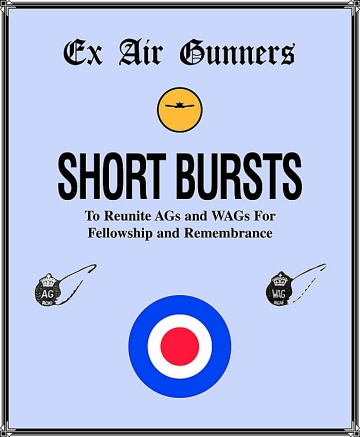
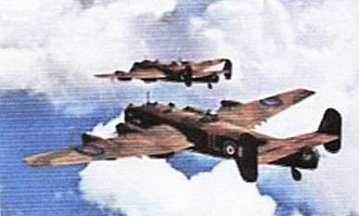
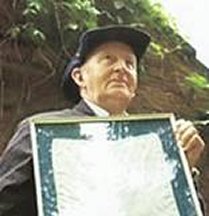 At
that point, Jim was presented with a framed and monogrammed handkerchief,
which had been made from his parachute.
At
that point, Jim was presented with a framed and monogrammed handkerchief,
which had been made from his parachute.
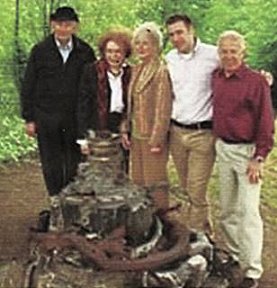


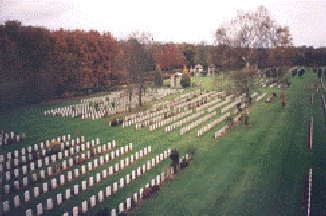
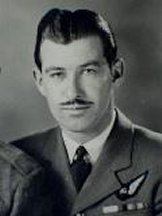
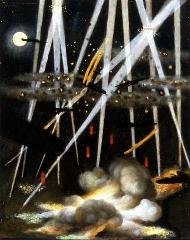 During
our descent I spoke to our pilot, John Grime on the intercom and asked
him to 'trim her out'. He responded "okay Tommy" and the stress could be
clearly heard in his voice.
During
our descent I spoke to our pilot, John Grime on the intercom and asked
him to 'trim her out'. He responded "okay Tommy" and the stress could be
clearly heard in his voice.
